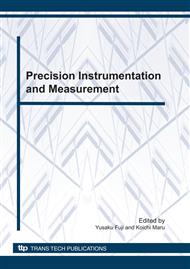p.243
p.253
p.263
p.273
p.282
p.287
p.293
p.297
p.303
Acoustic Analysis Using Finite Element Method Considering Effects of Damping Caused by Air Viscosity in Audio Equipment
Abstract:
The acoustic pathway in the enclosure of small headphones is very narrow. Therefore, the speed of sound propagation and the phase change because of the air viscosity. We have developed a new finite element method that considers the effects of damping due to air viscosity in the sound pathway. The new finite element method is obtained by improving the finite element method proposed by Yamaguchi for porous sound-absorbing materials. Moreover, we have attempted to obtain a numerical calculation of damping due to air viscosity by using the proposed finite element method.
Info:
Periodical:
Pages:
282-286
Citation:
Online since:
October 2010
Authors:
Keywords:
Price:
Сopyright:
© 2010 Trans Tech Publications Ltd. All Rights Reserved
Share:
Citation:


